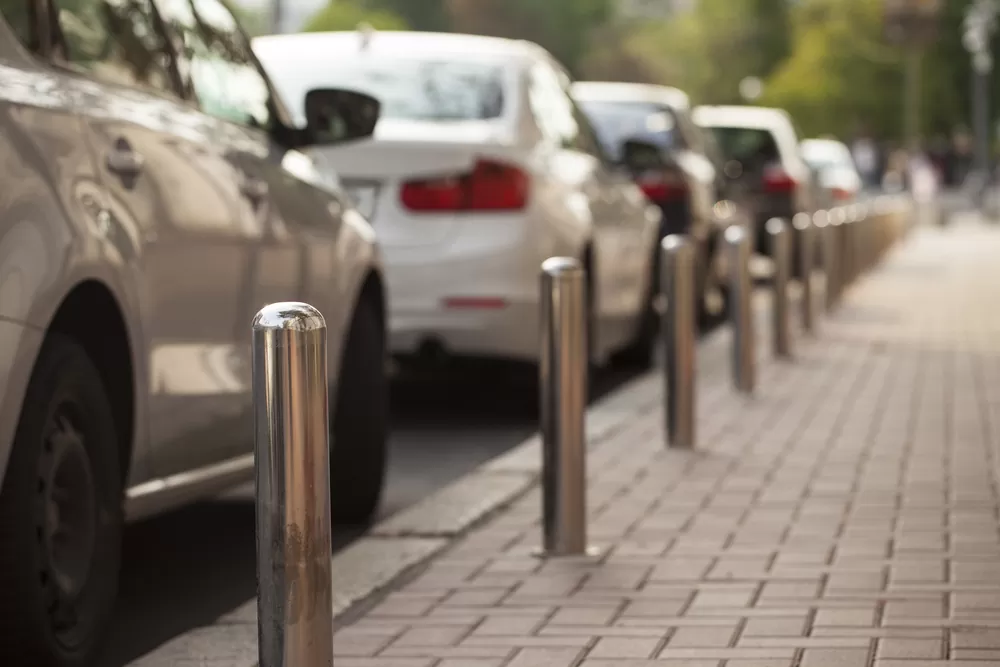
In today’s bustling urban landscapes, pedestrian safety has become a paramount concern. With the rise in vehicular traffic and the constant flow of people in city centers, ensuring the safety of pedestrians has become a significant challenge for urban planners and policymakers alike. In response to this growing concern, innovative solutions are being sought to mitigate the risks posed to pedestrians in high-traffic areas. One such solution gaining prominence is the implementation of bollard barriers.
Bollard barriers, once primarily used for security and traffic control purposes, have emerged as a multifaceted tool for enhancing pedestrian safety. These sturdy, vertical posts, often made of steel or concrete, are strategically placed to delineate pedestrian zones, create safe walkways, and provide protection from vehicular intrusions. In this blog, we delve into the effectiveness and impact of bollard barriers on pedestrian safety in high-traffic areas, exploring how they contribute to both traffic management and the overall safety of pedestrians.
Understanding Bollard Barriers
Bollard barriers, though often overlooked in the urban landscape, play a crucial role in enhancing pedestrian safety and traffic management in high-traffic areas. In this section, we delve into the definition, types, and pivotal role of bollard barriers in creating safer pedestrian environments.
Definition and Types of Bollard Barriers:
Bollard barriers are sturdy, vertical posts typically made of materials such as steel, concrete, or plastic. They are strategically placed to control or direct vehicular and pedestrian traffic. Bollard barriers come in various types, each serving specific purposes tailored to the needs of different urban environments:
Removable Bollards: Removable bollards are designed to be easily installed or removed as needed. They are often utilized in temporary traffic control scenarios or events where flexibility in traffic management is required.
Retractable Bollards: Unlike removable bollards, retractable bollards can be raised or lowered as needed, providing a more permanent solution while still offering the flexibility to control access to pedestrian areas or roads.
Static Bollards: Static bollards, also known as fixed bollards, are permanently anchored into the ground. They serve as a permanent fixture in urban landscapes, delineating pedestrian zones, protecting infrastructure, and guiding traffic flow.
The Role of Bollard Barriers in Urban Planning and Design
In urban planning and design, bollard barriers are instrumental in creating safe and pedestrian-friendly environments. They serve several key functions:
Traffic Control: Bollard barriers help regulate vehicular access to pedestrian areas, such as sidewalks, plazas, and pedestrianized streets. By delineating these spaces, bollards ensure the safety of pedestrians by reducing the risk of vehicle encroachment.
Security: Bollard barriers are often deployed in areas where security is a concern, such as government buildings, airports, and commercial districts. They act as a physical barrier to deter unauthorized vehicles from entering restricted areas, thereby enhancing security measures.
Protection of Infrastructure: Bollard barriers also serve to protect infrastructure and vulnerable targets from potential vehicle-related threats, such as ram-raiding or terrorist attacks. By strategically placing bollards around buildings, monuments, and public spaces, urban planners can safeguard these assets from potential harm.
How Bollard Barriers Contribute to a Safer Pedestrian Environment:
The presence of bollard barriers significantly contributes to creating a safer pedestrian environment in high-traffic areas. Here’s how:
Enhanced Separation: By delineating pedestrian zones from vehicular traffic, bollard barriers provide a clear separation that reduces the risk of accidents and collisions. Pedestrians can navigate these designated areas with greater confidence, knowing they are protected from vehicles.
Improved Visibility: Bollard barriers, particularly those with reflective markings or lighting, enhance visibility for both pedestrians and drivers, especially during low-light conditions or inclement weather. This improved visibility reduces the likelihood of accidents and increases awareness of pedestrian crossings and walkways.
Traffic Calming: In addition to enhancing safety, bollard barriers can also contribute to traffic calming efforts by slowing down vehicle speeds in pedestrianized areas. The presence of bollards encourages drivers to exercise caution and be more mindful of their surroundings, thereby reducing the risk of accidents involving pedestrians.
The Rise of Bollard Barriers in High-Traffic Areas
The implementation of bollard barriers in urban settings has become a significant aspect of city planning, driven by an urgent need to enhance pedestrian safety in high-traffic areas. This surge in their use is backed by compelling statistics on pedestrian accidents and the tangible benefits these barriers bring in mitigating such incidents. Through a combination of case studies and psychological insights, this section delves into the reasons behind the rise of bollard barriers and their effectiveness as a safety measure.
Statistics on Pedestrian Accidents in High-Traffic Areas
Recent statistics highlight a concerning trend of increasing pedestrian accidents in urban areas, with high-traffic zones being particularly hazardous. In many cities, pedestrian fatalities and injuries have underscored the critical need for effective safety measures. Studies have shown that pedestrian accidents are significantly more likely to occur in areas lacking clear physical delineations between pedestrian and vehicular zones. The introduction of bollard barriers in such areas has been a direct response to these alarming statistics, aiming to reduce accidents by creating safe, well-defined spaces for pedestrians.
The Psychology Behind Bollard Barriers
The effectiveness of bollard barriers extends beyond their physical presence; they also play a crucial role in influencing driver and pedestrian behavior through psychological cues. For drivers, the visibility of bollard barriers serves as a constant reminder of the presence of pedestrians, encouraging slower speeds and heightened awareness. This psychological deterrent effect is crucial in high-traffic areas where drivers may be more focused on navigating congestion than on pedestrian safety.
For pedestrians, the presence of bollard barriers provides a sense of security and delineation of safe spaces, reducing anxiety and the risk of accidents. This psychological comfort encourages more people to walk, contributing to healthier, more vibrant urban communities.
Moreover, the design and visibility of bollard barriers can reinforce their psychological impact. Aesthetically pleasing and clearly visible barriers are more likely to be respected and adhered to, further enhancing their effectiveness as safety measures.
Design and Aesthetic Considerations
As cities continue to evolve, the integration of functional infrastructure with aesthetic appeal becomes increasingly important. Bollard barriers, traditionally seen as purely utilitarian features for pedestrian safety, are now being recognized for their potential to contribute positively to the visual and spatial quality of urban environments. This section explores the balance between safety and aesthetics in bollard design, and the significance of material choice, and highlights innovative designs that serve as exemplars of how practicality and beauty can be intertwined.
Balancing Safety with Aesthetics
In the modern urban landscape, the design of bollard barriers has transcended their primary function of protection to also serve as elements of aesthetic enhancement. Urban designers and architects now face the challenge of creating bollards that not only effectively demarcate safe pedestrian zones but also harmonize with and enrich the surrounding architectural and natural elements. This balance is achieved through careful consideration of form, color, and texture, allowing bollards to seamlessly integrate into various urban contexts, from historical districts to contemporary commercial areas.
The Importance of Material and Design
The choice of materials for bollard barriers plays a crucial role in their effectiveness and durability. Materials such as steel, concrete, and stone are selected for their robustness and ability to withstand physical impacts as well as environmental factors. However, beyond their functional attributes, these materials also offer distinct textures and finishes that contribute to the aesthetic diversity of urban spaces. Design considerations extend to the shape and size of bollards, with contemporary designs offering sleek, minimalist options as well as more ornate variations to complement specific urban themes.
Innovative Designs: Bridging Safety and Aesthetic Appeal
Innovative bollard designs demonstrate the creative potential in blending safety features with artistic expression. Examples include:
Sculptural Bollards: Some cities have commissioned artists to design bollard barriers that double as public art installations, transforming functional elements into points of interest and conversation.
Illuminated Bollards: Incorporating lighting into bollards not only enhances safety by improving visibility at night but also adds a dramatic effect to the streetscape, highlighting pathways and creating ambiance.
Themed Bollards: In areas with historical significance or specific cultural themes, bollards are designed to reflect local history, wildlife, or cultural symbols, reinforcing community identity and pride.
Bollard Barriers and Accessibility
In the design and implementation of urban safety measures, the principle of accessibility for all individuals, including those with disabilities, is paramount. Bollard barriers, while primarily focused on enhancing pedestrian safety, must also be carefully considered and placed to promote inclusivity and ease of access. This section examines the considerations necessary to ensure bollard barriers support accessibility, their impact on pedestrian flow and emergency access, and the guidelines that govern their use to accommodate both pedestrian and vehicular accessibility.
Ensuring Bollard Barriers Promote Accessibility for All
Accessibility is a critical consideration in the deployment of bollard barriers. To ensure that these barriers do not inadvertently restrict mobility for people with disabilities, designs must adhere to principles that consider varied needs. This includes ensuring that spacing between bollards allows for the passage of wheelchairs, mobility scooters, and strollers, without compromising safety. Furthermore, bollards should be of a contrasting color to their surroundings to aid those with visual impairments in detecting their presence. Tactile ground surface indicators can also be employed in conjunction with bollard installations to guide individuals with visual impairments safely around or through pedestrian areas.
The Impact of Bollard Placement on Pedestrian Flow and Emergency Access
The strategic placement of bollard barriers is essential to facilitate smooth pedestrian flow and ensure emergency vehicles can access areas quickly when needed. Bollards should be arranged to direct pedestrian traffic intuitively, avoiding the creation of bottlenecks or areas of congestion, which can be particularly challenging for individuals with mobility issues. For emergency access, removable or retractable bollards are often used in strategic locations to allow ambulances, fire trucks, and police vehicles to pass through when necessary, ensuring that safety measures do not hinder critical responses to emergencies.
Guidelines and Regulations for Bollard Barriers to Accommodate Pedestrian and Vehicular Accessibility
Various guidelines and regulations have been established to ensure bollard barriers are installed in a manner that supports accessibility while fulfilling their safety functions. These guidelines typically specify minimum and maximum spacing between bollards, height requirements, and visibility standards to ensure they are detectable and navigable for all pedestrians. For example, the Americans with Disabilities Act (ADA) in the United States provides comprehensive guidance on the installation of bollards to ensure accessibility is maintained. Similar standards exist in other countries, reflecting a global recognition of the importance of inclusive design in public infrastructure.
The Future of Pedestrian Safety and Bollard Barriers
As we look toward the future of urban development, pedestrian safety remains a paramount concern, necessitating continuous innovation and adaptation. The future of bollard barriers, a key component in the toolkit for enhancing pedestrian safety, is set to be shaped by emerging technologies, innovative designs, and an increasing emphasis on community involvement. This section explores these advancements and considers how they will influence the evolution of pedestrian safety measures.
Emerging Technologies and Innovations in Bollard Design
The next generation of bollard barriers is expected to leverage a wide array of technologies to enhance functionality, safety, and integration into smart city frameworks. Among these innovations, smart bollards equipped with LED lighting stand out for their potential to improve visibility and aesthetics. These bollards can be programmed to change colors or flash in response to specific triggers, such as approaching emergency vehicles, altering pedestrian flow during events, or enhancing ambiance during festivities.
Further, the integration of sensors and connectivity features into bollard designs could enable real-time data collection on traffic patterns, pedestrian numbers, and environmental conditions. This information could be invaluable for city planners in optimizing pedestrian flows, improving safety, and reducing congestion. Moreover, smart bollards could be interconnected with other urban infrastructures, contributing to a cohesive and responsive urban ecosystem.
The Role of Community Engagement and Feedback
The future of pedestrian safety measures, including the deployment of bollard barriers, will increasingly rely on community engagement and feedback. This participatory approach ensures that the needs and preferences of the local population are considered, leading to more effective and accepted safety solutions. Community feedback mechanisms, such as public consultations, digital platforms, and pilot programs, provide valuable insights into the real-world impacts of safety measures, allowing for iterative improvements and adaptations.
Engaging with the community also helps to foster a sense of ownership and responsibility towards local safety initiatives, encouraging positive behavioral changes among both pedestrians and drivers. By involving residents in the planning process, cities can create pedestrian safety solutions that are not only effective but also reflective of the community’s identity and values.
Predictions for the Evolution of Pedestrian Safety Measures
Looking ahead, pedestrian safety measures are likely to become more integrated, intelligent, and adaptive. The incorporation of artificial intelligence and machine learning into urban safety infrastructure could lead to systems that dynamically adjust to changing conditions, optimizing safety in real time. For instance, bollard barriers could automatically retract to allow emergency vehicle access or to accommodate increased pedestrian flows during peak times.
Sustainability will also play a crucial role in the evolution of pedestrian safety measures. Innovations in materials and manufacturing processes are expected to reduce the environmental impact of bollard barriers, aligning with broader urban sustainability goals. Additionally, the design of pedestrian safety infrastructure will increasingly consider the needs of a diverse urban population, including the elderly, children, and individuals with disabilities, ensuring inclusivity and accessibility for all.
Conclusion
Bollard barriers significantly enhance urban pedestrian safety by providing protection and defining spaces. This piece advocates for their strategic use in city planning to tackle safety challenges, improve aesthetics, and increase accessibility. Emphasizing the integration of community feedback and technology, it encourages cities to adopt bollard barriers for a safer, inclusive future.

offer now at
Our Clients





































